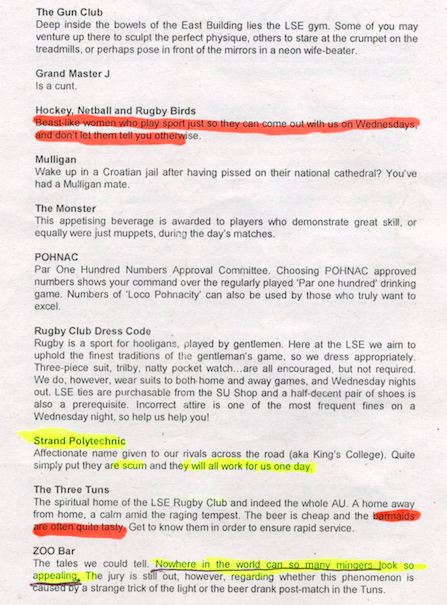Leo Igwe delivered The Blackham Lecture 2015 in Birmingham on March 12.
To all my friends at Birmingham Humanists, thank you for the honor of selecting me to deliver this year’s Harold Blackham Memorial Lecture.
I never had the honor of meeting Harold Blackham but I read about his great achievements. Notably his contributions to the British Humanist Association and to the international humanist movement. I am a product of that international humanist project. I stand here, grateful to Harold Blackham and others who contributed to the founding of the International Humanist and Ethical Union. Blackham was a philosopher and a teacher who cared about moral education. He understood the importance of moral questions and inquiry to the humanist project.
How should we live? This is one of the great humanist questions. For me the question has been: How are we Africans to live in the face of contemporary moral dilemmas? This question leads us to more questions: How can Africans achieve a morally meaningful life in this 21st century? What are the moral choices open to them? How should an African live in a world where moral and educational choices are constrained by powerful local and international religious interests? Is there a secular way of addressing these moral challenges?
Stephen Law delivered the first lecture in this series. He discussed the topic: How Do We Raise Moral Children? Law identified two schools of thought, the authoritarian and the liberal. He noted a shift in moral attitudes from the authoritarian to the liberal since the second half of the 20th century. This shift to enhanced moral autonomy, not deference to external authority, has become the standard of raising moral children. The shift has been criticized by those who believe that greater moral autonomy leads to a situation of ‘moral malaise’ and propose a return to the authoritarian way of child rearing. Law faulted the arguments of those who advance a more authoritarian style of child rearing. This approach he argued would lead to a ‘society of moral sheep’, a society without a moral compass. Law stated that encouraging autonomous thinking by getting people to make their own moral judgments was a better way of raising moral children.
Micheal Hand continued with this debate in his lecture on moral education. He drew attention to the tension between the idea that morality must be learned and therefore can be taught versus the idea that morality is controversial and therefore cannot be taught. He identified two trends of moral education, moral formation and moral inquiry. Moral formation is a form of education in which students are taught to subscribe to moral standards. Moral inquiry on the other hand is investigating with students what moral standards are justified.
Moral inquiry can be directive and non directive. It is directive when the teacher persuades pupils to embrace some moral standards and reject others. Moral inquiry is non directive when the teacher aims to elicit from pupils what is and is not justified. Moral education should embrace both moral formation and enquiry if its aim is to achieve full commitment to moral standards.
How do we apply these thoughts and insights to the dilemmas confronting Africans today? First we need to put into perspective how the authoritarian and liberal approaches apply to the African moral landscape. The authoritarian conservative approach is regarded as ‘African’, as a position that is in line with ‘African values.’ But is authoritarian moral style really African? The liberal approach is taken to be ‘Western’ and often used to dismiss certain moral positions. Is the liberal moral position really western?
Labeling these approaches as African or western has caused confusion in the moral reasoning of Africans, particularly when they are faced with issues that require a shift in attitudes, a change in position or a revision of their thoughts or to embrace new ideas.
The authoritarian approach draws mainly from African traditions, Christianity or Islam. These sources are considered as unquestionable moral definitions in the society, but are they? Are these sources clear and unchanging or open to interpretation by every person for their own purposes?
Africa does not have a codified tradition that is invariable from person to person, community to community or country to country. The same is applicable to Christianity and Islam. The teachings of these religions span centuries. They are contained in oral and written traditions that sometimes contradict each other in numerous doctrines and dogmas that do not make coherent moral sense. When Christian armies fight Christian armies or Islamic armies fight Islamic armies, where is the one true word and for that matter, where is the one true god?
It hardly occurs to many Africans when they argue for a moral position on the basis of Christian or Islamic authority that they are making an argument based on religions that are foreign and ‘unAfrican’. Christianity was an Asian religion introduced into Africa by ‘western’ European missionaries and if Africans dismiss any moral position or prescription because it is western or unAfrican then it should dismiss Christianity. Islam is from Asia as well and thus also foreign and just as readily dismissed as unAfrican.
There is nothing in a liberal approach to morality that makes it western. There is likewise nothing in the conservative and close minded that makes it African. Liberal and conservative approaches can be seen all over Africa and all over the world in varying degrees. There is a conflation of these two ideas that is false.
African moral demagogues have used this conflation to justify morally retrogressive views and backward looking positions. It gives credence to this mistaken notion that openness to new ideas is European or that embracing new moral values is western, and not habits and dispositions that are found in all cultures. One can argue that contemporary Africans espouse Christian or Islamic morality however loosely conceived because of their liberal attitude in the past to what was once a new idea. Though one would argue that this happened through a process marked by coercion and compulsion, the spread of these foreign religions testifies to the openness by Africans to new ideas.
Authoritarian and liberal approaches come to the table of moral discourse and reasoning with this confused baggage. This confusion has led to dilemmas hampering a clear shift in attitudes because many Africans refrain from ‘openly’ and publicly’ endorsing change even when a change is needed and is necessary. They present a moral position which they would have otherwise discarded just because they do not want to be seen or blackmailed as liberal or western in their approach. They do not want to identify with liberal attitude that is equated to moral license, irreverence, corruption, alienating lifestyle, and a betrayal of African values. One subject where these moral ambiguities are pronounced is the campaign against witchcraft accusation in Africa.
The colonialists outlawed witchcraft accusation and witch hunting as an extension of the enlightenment understanding of the natural world. These new laws put the accuser not the accused in the wrong. Witchcraft accusation is a form of death sentence. The enlightened considered witch hunting a practice that was repugnant to “natural justice, equity and good conscience.” But the custodians of African values have had a different idea. Since independence, witchcraft has been reintroduced as a crime by some African states. The anti-witchcraft accusation legislation, wherever it exists, has been ignored, misinterpreted or repealed in what some have argued was an initiative that is consistent with and in furtherance of “African tradition and values.” What is African tradition; accusing innocent people of committing imaginary crimes?
In 2006, Zimbabwe repealed legislation introduced during the colonial period that outlawed witchcraft accusation. In its place, Zimbabwe enacted a law that recognized the existence of supernatural powers and criminalized the use of magic to harm someone. The new law legitimizes traditional healing practices like “rolling bones to foretell the future, divination, attempts to communicate with the dead, using traditional powders and fetishes to ensure the desired sex of a child”. According to a BBC report a professor and a sociologist who was chairman of Zimbabwe’s Traditional Medical Practitioner’s Council thinks that witchcraft could be of some benefit to the modern world. He says it could be used to catch a thief. Zimbabwe could do the modern world a huge favor by appointing this witch to head its police so he could demonstrate the tremendous power of witchcraft and show them how police work is really done.
The BBC report says that it would be difficult to prosecute someone under this law. “The repealing of the witchcraft laws is another sign that Zimbabwe’s government is continuing to move away from Western values and placing more emphasis on the country’s own traditions.“ What is Zimbabwe’s tradition in this case? Divination? Necromancy? and the use of traditional medicine? Africa is also witnessing a move away from “Western Christianity”. This move has led to the emergence of African churches that are championing witch hunts. African pentecostal pastors have become the modern day witch hunters in what has emerged today as African or Africanized Christianity.
In the last three years I have been researching witchcraft accusation in Northern Ghana. This is what an accused woman has to say about the accusation.
“WHAT WAS YOUR RELATIONSHIP WITH THE DECEASED?”
“The only relationship is that my colleague’s son got married to her. And then she was also staying in the same room with me. I provided everything she needed. When her pomade and bathing soap finished I tried my best to buy some for her. And all they say now is that I have killed her. Forgetting how I suffered for her. Why is it that when she was a small girl, I was the one who did everything for her, then I did not harm her and now they are accusing me of killing her?”
In another interview, a woman who was accused of betwitching the daughter and subsequently banished to the witch sanctuaries in the region asked me. “How can I give birth to a child, nurtured her and now she is an adult I decided to kill her?”
African tradition is used as the moral justification for the continued practice of the Osu caste system among the Igbos in Southern Nigeria. The caste system discriminates against lower caste people called Osu. The Osu are regarded as untouchables and unmarriable by the higher caste persons. I have been campaigning against this obnoxious practice. I have received letters from both lower and higher caste persons who have been affected by the harmful cultural practice.
This is from a young man who was affected by the tradition:
Dear Sir/Madam
I have read and understood this write up on the so called OSU matter, I am a young man of 31years old from Abba in Wangele local area goverment Imo State of Nigeria but i live in South Africa. Last year 2014 I have met 3 ladies from the same Imo state that I wanted to marry of which they accepted me but their family refused because they said I am OSU, My reason for writing to you is to find out if there is anything possible one can do to stop this OSU of a thing in our Igbo land especially in Imo state where I come from because this has been keeping many of our youths single. Hope to hear from you soon thanks.
It is not only the so called Osu who are affected, the higher caste people are suffering too. A ‘free born’ lady,affected by the practice wrote me and said:
Dear sir,
My name is Q T .I am 25yrs old,a native of ezeogba in emekuku owerri,imo state. I am a christian and also from a religious background
I read your article on osu caste and it inspired me a lot.I am a victim of this evil tradition in the sense that my marriage was canceled because of it. My fiance happens to be an Osu (as they said) from umuofor,Ebgu in owerri,imo state and me a nwadiala .Despite my parents christian faith and strong positions in church,they have vehemently refused me from marrying him. And we both love each other very much
We have done everything humanly possible to make my people understand but to no avail. Even now,the battle is still on in my family.
The question I keep asking is how long will this evil tradition prevail? Can’t something be done about it? Where are the so called religious leaders? Is this actually the plan of God for “Igbos”?. I taught the Holy book said we shouldnt call whatever God has created unclean. isn’t it supposed to be one people, one nation, one igbo ,one culture?
We need to arise and abolish this evil tradition. we have to call on our leaders both religious,traditional and political leaders,human rights activist,NGOs and the igbo communities to help remove this leprosy from our culture. For the sake of our lives and that of our children(even those yet unborn),for the precious sake of our future.
This is from a broken heart,a wounded soul,a voice crying out for help just like many others who have been victims of this tradition. You can reach me through this email.
Tradition is used as the justification for female genital mutilation, ritual killing of albinos and persons with disabilities. The authorities of tradition, god or spirit are invoked to give moral legitimacy to torturing a witch to death, to the persecution and execution of homosexuals, to murdering persons who profess other faiths or those who hold critical or offensive views. We have seen this situation play out in many African countries where people attack kill and maim each other in the name of imaginary beings. Where students lynched their own teacher for supposedly desecrating the Quran, where islamic militants have attacked churches and mosques, killed innocent men and women and kidnapped school boys and girls in furtherance of their campaign to implement sharia law and enthrone an islamic state and in Niger where muslim fanatics protesting the cartoon of prophet Muhammad burnt down churches and killed people who had nothing to do with the cartoon.
A moral crisis is simmering in the region due to contradictory dictates of authoritarian dogma. An urgent moral awakening is needed to dispel mistaken notions that cloud reasoning. Moral education has been dogmatic and directive leaving no room for debate or deliberation with the moral educators be they parents, teachers, pastors or imams. Moral standards are presented as absolute unchangeable and eternal guides handed down from God, Allah or ancestors to mankind who should not revise or modify them.
Contemporary Africans are trapped in a moral cave guarded by traditional, Christian or sharia police sometimes backed by transnational establishments like the Vatican, OIC or the Anglican Communion.
People in the region are presented with a moral choice of remaining in the cage of traditional or religious authoritarianism or breaking away and embracing a new approach to moral thinking. To resolve this dilemma, a shift away from religious authoritarianism and dogmatism towards a secular liberal approach is needed. Africans must rediscover the centrality of their humanity, and begin to unlearn and abandon this pervading idea that without God or ancestors human beings have no moral compass. They must embrace the idea that we human beings are the moral compass. That the external moral authorities are human creations as well.
Moral education must embrace inquiry and criticism, ability to question and challenge without fear moral standards presented by preachers and teachers. Part of moral education should be subjecting moral teachings to critical evaluation and revising moral positions in the light of new knowledge, information and ideas. Morality is not cast on stone!
Moral instruction that aims to enhance individual autonomy should be the goal of moral education. With greater moral autonomy Africa would stop being a moral sheep following the dictates of OIC, Vatican, traditional, christian and islamic demagogues. Africans need to be able to hold independent moral positions.
Africans should begin to conceive morality in the words of Harold Blackham “As something unfinished”, as a process that is always in the making, ”as a material for creative use, a task for our responsible undertaking.”
Thank you.
(This is a syndicated post. Read the original at FreeThoughtBlogs.)











